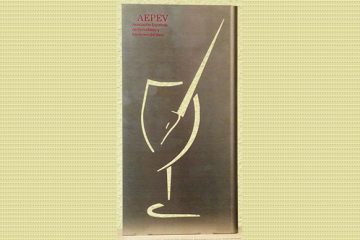Spend enough time around French wine, and you’ll invariably hear the phrase “Grand Cru”. It sounds good, but it’s often misunderstood. It’s easy to see why: The term itself is French for “great growth”, with “growth” in the natural, agricultural sense of the word. Unfortunately, it’s not simply the case that the best vineyards in France are referred to as Grand Cru – many are, though there are outstanding wineries that don’t bear such a title, and the term has different meanings from one wine region to another, and. Grand Cru Champagne is one thing, and Grand Cru Bordeaux quite another.
To understand things a little better, we’ll focus on Bordeaux, its Grand Cru rankings and some important Grand Cru wineries you should know about!
Grand Cru Bordeaux
Let’s look at Bordeaux, then. There are almost 10,000 producers in the region, and the vast majority of the wine produced is inexpensive, entry-level Bordeaux. However, there is a small, highly visible minority at the high end of the market – the Grand Cru Classé of Bordeaux.
In simple terms, a “Grand Cru” Bordeaux is a château that has been listed on one of several official classification systems. Bordeaux itself is divided into numerous geographical subzones, and most top subzones have a Grand Cru ranking of some kind. No classification covers the entire Bordeaux region. The most famous is the 1855 classification, which is an official tiered system applied to the top producers of the Médoc and Sauternes regions in that year.
Bordeaux Grand Cru Classé rankings
Let’s look now at each of the Grand Cru rankings of Bordeaux. With the notable exception of Pomerol, all of the key fine wine subzones of Bordeaux are covered by one Grand Cru classification or another.
Médoc Grand Cru Classé
-
In a nutshell:
The red wines of the Médoc region on Bordeaux’s left bank were ranked as part of the 1855 Official Classification of Bordeaux wines. Today, there are 61 individual wineries on the list, ranked on a hierarchy of five tiers, from Premier Grand Cru Classé (commonly known as “first growth”) to Cinquième Grand Cru Classé (“fifth growth”).
-
Key wineries:
The five “first growths” are the most highly-rated and most expensive. They are Châteaux Haut-Brion, Margaux, Lafite Rothschild, Latour and Mouton Rothschild. The unofficial group known as “super seconds”, including Châteaux Palmer, Ducru-Beaucaillou and Cos d’Estournel, can often compete with the top names on both quality and price.
Sauternes Grand Cru Classé
-
In a nutshell:
Also a part of the 1855 classification, the sweet wines of Sauternes and Barsac were ranked on a separate list. This ranking is rarely considered to be as important as the Médoc list. There are three tiers here: Premier Cru Supérieur, Premier Cru and Deuxième Cru.
-
Key wineries:
The most important winery here is the most important sweet wine producer in the world, Château d’Yquem. This is the sole member of the top tier, the only Premier Cru Exceptionnelle. Château Suduiraut is an important Premier Cru winery, and can often produce wines approaching Yquem’s quality at a much lower price.
Graves Grand Cru Classé
-
In a nutshell:
The Graves region lies on the left bank, south of Bordeaux city. Many of its wineries lie in the city’s suburbs, in fact. All of the Grand Cru wineries here actually belong to the Pessac-Léognan appellation, which was established in 1987. The classification here was introduced in 1953, and is relatively simple: There’s no hierarchy, a winery is either in or out – though wineries can be classified for their red wines, white wines, or in some cases, both.
-
Key wineries:
Haut-Brion, the Médoc first growth, lies in Pessac-Léognan, and is thus a member of the Graves Grand Cru Classé, as well as the 1855 ranking. The other top Grand Cru estate here is La Mission Haut-Brion.
Saint Emilion Grand Cru Classé
-
In a nutshell:
The structure of the Saint Emilion ranking system is a little more complicated, because it is intrinsically linked to the appellation system, and is actually updated with relative frequency. The top tier here is the Premier Grand Cru Classé A, followed by Premier Grand Cru Classé B, Grand Cru Classé and, finally, Grand Cru. Non-ranked wineries just bear the name “Saint Emilion” on the label, with no reference whatsoever to “Grand Cru”. The ranking was last updated in 2012, and is scheduled to be revised in 2022.
-
Key wineries:
The top tier has four members, Châteaux Ausone, Cheval Blanc, Pavie and Angélus. Other prominent wineries include Châteaux Figeac, Valandraud and La Mondotte.
Have any questions? Let us know in the comments!
[cta_generico id=2599]



2 Comments
Gary Conklin · 30/03/2020 at 23:46
Why is Les Cadrans lassegue considered a grand cru in Saint Emilion?
INVINIC · 31/03/2020 at 10:18
Dear Gary,
thank you for your message.
We do not know why it is considered Grand Cru, since this wine is not in the Grand Crus Classé classification, the best ones are the Premiers Grand Cru Classé (A and B) of Saint Emilion.
The classification is revised every 10 years and the last one available is from 2012.
Les Cadrans is the second wine of the winery, the inferior to Chateau Lassègue.
Attached is the official website of Bordeaux where it is not classified as a Grand Cru.
https://www.bordeaux.com/gb/Our-Terroir/Classifications/Grands-Crus-de-Saint-Emilion
We’re sorry, but we can’t help you further
INVINIC